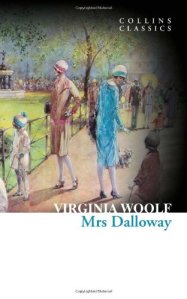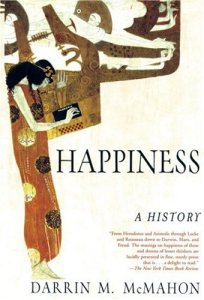 March
28
March
28
Tags
The Elusion of Happiness in Viginia Woolf’s Mrs Dalloway
 On the 28th of March 1941, English writer Virginia Woolf filled her pockets with stones and drowned herself in the River Ouse, near Lewes, East Sussex during a bout of severe depression. Her entire life revolved around the fruitless chase of inner peace and happiness which she fervently pursued through the creative act of writing. Her novel Mrs Dalloway published in May 1925 is an example in which she explores the various facets of happiness through the eyes of a female protagonist.
On the 28th of March 1941, English writer Virginia Woolf filled her pockets with stones and drowned herself in the River Ouse, near Lewes, East Sussex during a bout of severe depression. Her entire life revolved around the fruitless chase of inner peace and happiness which she fervently pursued through the creative act of writing. Her novel Mrs Dalloway published in May 1925 is an example in which she explores the various facets of happiness through the eyes of a female protagonist.
In short, the plot of the book Mrs Dalloway captures a day in the life of Clarissa Dalloway, a fictional high-society woman in 1923 London. Clarissa is preparing for an evening social gathering and pops out to buy some flowers for the party. On her walk through London she reminisces about her youth in rural Bourton, her friendship with the free-spirited Sally and her refusal of Peter Walsh’s marriage proposal. Upon her return home, Peter drops by her house unexpectedly, and old feelings, regrets and doubt about her chosen life path, alongside her reliable current husband, resurface. Meanwhile, the scene shifts to the mental struggles of Septimus Warren Smith, a young man who survived the battlefields of Europe in WWI and is suffering from loss of emotional connection with the surrounding world, following shell-shock. Fearing lack of understanding from his psychiatrist and the threat of institutionalisation, he commits suicide by jumping from a window. His doctor, a guest at Clarissa’s party that evening, matter-of-factly tells the guests about Septimus’ sad ending. Woolf’s sensitive character analysis shows how all partygoers have, to some degree, failed to accomplish the dreams of their youth. Clarissa certainly feels like one of them. She retires to a side room to ponder upon the loss of Septimus’ life, and feels strong empathy for him being misunderstood by the doctor Sir William, her guest, no less. She almost identifies with Septimus, even though the two are poles apart in social standing. She feels guilty for being, on the surface, the perfect upper class, privileged hostess. Deep down she wishes she had Septimus’ courage to make a stand against unhappiness, mediocrity and the shallowness of her life.
 In a lengthy debate about happiness, particularly in relation to women, Sara Ahmed wrote: “Feminism involves political consciousness of what women are asked to give up for happiness. Indeed, in even becoming conscious of happiness as loss, feminists have already refused to give up desire, imagination, and curiosity for happiness. There can be sadness simply in the realization of what one has given up. Feminist archives are thus full of housewives becoming conscious of unhappiness as a mood that seems to surround them: think of Virginia Woolf’s Mrs Dalloway. In the world of the novel, the feeling is certainly around, almost like a thickness in the air. We sense the unhappiness seeping through the tasks of the everyday. There she is, about to get flowers, enjoying her walk in London. During that walk, she disappears.” (Sara Ahmed, ‘Killing Joy: Feminism and the History of Happiness’, Signs, Vol. 35, No. 3, Spring 2010). Woolf writes in the novel: “But often now this body she wore (she stopped to look at a Dutch picture), this body, with all its capacities, seemed nothing—nothing at all. She had the oddest sense of being herself invisible; unseen; unknown; there being no more marrying, no more having children now, but only this astonishing and rather solemn progress with the rest of them, up Bond street, this being Mrs. Dalloway; not even Clarissa anymore; this being Mrs. Richard Dalloway.” (Mrs Dalloway)
In a lengthy debate about happiness, particularly in relation to women, Sara Ahmed wrote: “Feminism involves political consciousness of what women are asked to give up for happiness. Indeed, in even becoming conscious of happiness as loss, feminists have already refused to give up desire, imagination, and curiosity for happiness. There can be sadness simply in the realization of what one has given up. Feminist archives are thus full of housewives becoming conscious of unhappiness as a mood that seems to surround them: think of Virginia Woolf’s Mrs Dalloway. In the world of the novel, the feeling is certainly around, almost like a thickness in the air. We sense the unhappiness seeping through the tasks of the everyday. There she is, about to get flowers, enjoying her walk in London. During that walk, she disappears.” (Sara Ahmed, ‘Killing Joy: Feminism and the History of Happiness’, Signs, Vol. 35, No. 3, Spring 2010). Woolf writes in the novel: “But often now this body she wore (she stopped to look at a Dutch picture), this body, with all its capacities, seemed nothing—nothing at all. She had the oddest sense of being herself invisible; unseen; unknown; there being no more marrying, no more having children now, but only this astonishing and rather solemn progress with the rest of them, up Bond street, this being Mrs. Dalloway; not even Clarissa anymore; this being Mrs. Richard Dalloway.” (Mrs Dalloway)
The age-old theme of the married woman who lives for her husband and family and ends up losing her identity is clearly the message of Mrs Dalloway. At the same time, her thought of identifying with the misunderstood war veteran pinpoints her sense of failure to properly integrate into a society, which paradoxically considers her a social aspirational model, the well-to-do domestic goddess and politician’s wife. Here, Woolf points out a distinctive difference between a general consensus of happiness as perceived by Clarissa’s social class and her intimate, personal valuation of happiness. There is also a further implication if we consider Mrs Dalloway in contemporary feminist terms, as it often is the case nowadays, when it comes to a book written by a woman about the inner life of a woman. In The Promise of Happiness (Duke University Press, 2010), Sara Ahmed showed that throughout the past decades, feminists have systematically recorded instances of unhappiness (instead of happiness) in order to point out issues in which women were short-changed in life. It is a case of seeing the glass half empty and concentrating on the lack of happiness rather than the presence of it. She writes that, “perhaps feminist history teaches us that we need to give a history to unhappiness, and that, Feminists do kill joy in a certain sense: they disturb the very fantasy that happiness can be found in certain places. To kill a fantasy can still kill a feeling. It is not just that feminists might not be happily affected by the objects that are supposed to cause happiness but that the failure to be happy is read as sabotaging the happiness of others.” (Sara Ahmed, ‘Killing Joy: Feminism and the History of Happiness’, Signs, Vol. 35, No. 3, Spring 2010). Could perhaps Woolf’s Mrs Dalloway fit this mould?
Sara Ahmed showed that throughout the past decades, feminists have systematically recorded instances of unhappiness (instead of happiness) in order to point out issues in which women were short-changed in life. It is a case of seeing the glass half empty and concentrating on the lack of happiness rather than the presence of it. She writes that, “perhaps feminist history teaches us that we need to give a history to unhappiness, and that, Feminists do kill joy in a certain sense: they disturb the very fantasy that happiness can be found in certain places. To kill a fantasy can still kill a feeling. It is not just that feminists might not be happily affected by the objects that are supposed to cause happiness but that the failure to be happy is read as sabotaging the happiness of others.” (Sara Ahmed, ‘Killing Joy: Feminism and the History of Happiness’, Signs, Vol. 35, No. 3, Spring 2010). Could perhaps Woolf’s Mrs Dalloway fit this mould?










The failure to be happy is read as sabotaging the happiness of others, before coming to this sentence I was just telling my self that depression is contagious and whether it’s a good idea to read for depressed writers as this might give you depression.
Vergini Woolf story and novel is interesting though, thank you for bringing up interesting concepts.
Heba
LikeLike
thank you for reading, Heba!
LikeLike
Are you sure the elusiveness of happiness is the main theme Virginia Woolf (not Vergini) brings up in this novel? Quite a few critics would disagree with you.
LikeLike
Reblogged this on Lenora's Culture Center and Foray into History.
LikeLike
Pingback: Multiple Narratives In and About Virginia Woolf | Recent Items
This is beautiful 🙂
LikeLike
I am reading Mrs. Dalloway now, it’s quite metaphorical and intricate. Thank you for the review.
LikeLike